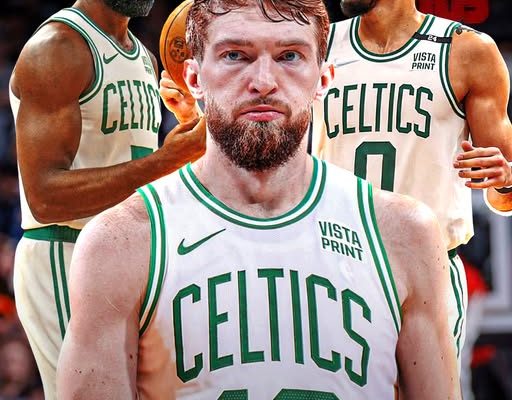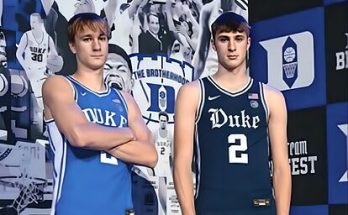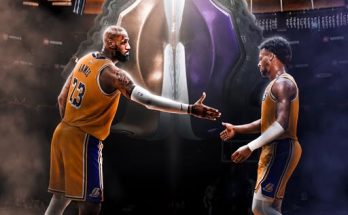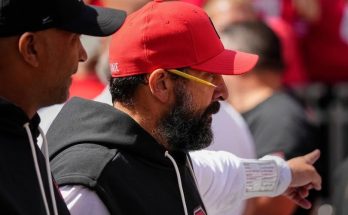The Boston Celtics find themselves at a crossroads in the summer of 2025. A franchise long defined by its winning culture and championship pedigree, Boston entered the 2024-25 NBA season with dreams of hoisting Banner 18. Instead, the campaign ended in bitter disappointment. Despite finishing with a strong regular-season record and holding the second seed in the Eastern Conference, the Celtics flamed out in the playoffs in unceremonious fashion. Their lack of depth, over-reliance on wing play, and an increasingly one-dimensional offense were all exposed during a second-round exit at the hands of a hungry and aggressive Cleveland Cavaliers team.
To make matters worse, the Celtics were dealt a major blow just weeks into the offseason—Jayson Tatum suffered a significant foot injury while training privately, and he is expected to miss the first half of the 2025-26 season. While not necessarily career-threatening, the injury presents a major obstacle for a team built almost entirely around Tatum’s scoring, leadership, and presence. With Jaylen Brown facing questions about his long-term fit and the supporting cast aging or proving inconsistent, Boston’s front office is now forced to rethink the team’s trajectory. Do they double down and wait for Tatum to return, risking another stagnant season in the crowded East? Or do they pivot to a more aggressive retooling strategy while their superstar heals, ensuring they remain competitive and position themselves for long-term success?
That question has led to an intriguing trade proposal that’s begun gaining traction across NBA circles: Domantas Sabonis to Boston. On the surface, it seems bold—trading for a player who plays a very different style than the Celtics’ current stars. But upon deeper analysis, Sabonis could be exactly the kind of foundational piece Boston needs to remain relevant and competitive, while also laying the groundwork for a smoother transition into a new offensive identity. With Tatum temporarily out and the organization in transition, now is the perfect time to consider such a move.
Sabonis has quietly become one of the most complete big men in the NBA. After being traded to the Sacramento Kings from Indiana in 2022, he blossomed into a walking double-double and a triple-double threat on any given night. In the 2024-25 season, he averaged 19.4 points, 13.6 rebounds, and 7.2 assists per game, shooting an efficient 62% from the field. He was the engine of Sacramento’s offense, operating from the high post, initiating plays, and creating space for shooters and cutters alike. His unselfish play, elite basketball IQ, and physicality in the paint have made him a fan favorite and a respected leader among peers.
However, despite his brilliance, the Kings have failed to break through in the Western Conference. After another early playoff exit this past season, there are whispers that Sacramento’s front office might consider retooling around De’Aaron Fox. With Keegan Murray emerging as a versatile forward, and with new draftee Isaak Okoro bringing energy and length, Sacramento might be more open than ever to exploring trades involving Sabonis—particularly if the return offers a mix of win-now assets and future flexibility.
Boston, with its array of assets, is uniquely positioned to make such a deal. A package centered around Jaylen Brown, Al Horford’s expiring contract, and a combination of future first-round picks and young talent like Payton Pritchard or Jordan Walsh could be enough to pique Sacramento’s interest. For the Kings, it would provide a two-way wing in Brown who thrives in transition and brings playoff experience. For Boston, it would mark a strategic shift—one that would prioritize ball movement, interior playmaking, and offensive variety.
The value of bringing in Domantas Sabonis goes beyond just his stat sheet. Boston has historically thrived when their offense is rooted in high-IQ, movement-heavy systems. Think of the 2008 championship team with Kevin Garnett’s facilitating from the elbow, or even the Brad Stevens-led 2017 squad with Al Horford and Kelly Olynyk sharing the ball beautifully from the high post. Sabonis would bring that kind of cerebral fluidity back to Boston’s offense. He’s a connector—a player who doesn’t need to dominate the ball to be effective but can also initiate offense when needed.
This becomes even more important in Tatum’s absence. Without their go-to scorer, Boston’s current lineup lacks a player who can create offense for others consistently. Derrick White is a solid combo guard, Jrue Holiday brings defensive grit and veteran savvy, and Kristaps Porziņģis is a floor-spacing big who can block shots and shoot threes. But none of them are natural facilitators. Sabonis would step into that role with ease, giving head coach Joe Mazzulla a new offensive hub to design around. Instead of iso-heavy sets that have become predictable in the playoffs, the Celtics could shift to a motion-based attack built on screens, cuts, and backdoor action—all of which fit Sabonis’ strengths perfectly.
Defensively, there are valid concerns. Sabonis is not known as an elite rim protector or switch defender. However, the Celtics already have the personnel to cover for those limitations. With Porziņģis and Holiday anchoring the back line and perimeter respectively, and with athletic wings like Oshae Brissett and Sam Hauser improving, Boston can afford to pair Sabonis with another frontcourt defender. Moreover, Sabonis is a strong positional defender who excels in boxing out, closing off driving lanes, and making smart rotations. He may not block many shots, but he keeps possessions alive and competes on every play.
It’s also worth noting that Sabonis is only 29 years old. He’s entering the prime of his career, and his skillset is likely to age well given how little he relies on athleticism. His game is built on timing, touch, and vision—skills that tend to improve with age. Bringing him to Boston now, especially with Tatum sidelined, allows the Celtics to integrate him seamlessly into their system, experiment with new offensive sets, and set the stage for a potent 1-2 punch once Tatum returns. A Tatum-Sabonis pairing offers a fascinating inside-out combination, one that could confound defenses and provide the Celtics with new options late in games.
Financially, the move also makes sense. Sabonis is on a reasonable contract considering his production—roughly \$28 million annually through 2027. That number is lower than many of the league’s other stars and gives Boston enough flexibility to retain key role players or pursue additional reinforcements in the future. Compare that to the long-term uncertainty surrounding Jaylen Brown’s max extension and the cap gymnastics required to keep Boston’s current core intact, and the Sabonis deal starts to look even more appealing.
There’s also a cultural fit to consider. Sabonis is known as a consummate professional—a team-first guy who leads by example, stays out of drama, and elevates those around him. In a market like Boston, which values work ethic and accountability, Sabonis would be embraced wholeheartedly. He doesn’t demand the spotlight, nor does he shy away from tough situations. He’s the kind of player who would mesh well with Tatum once the latter returns, and one who would help mentor Boston’s younger players in the meantime.
Of course, any move of this magnitude comes with risk. Trading Jaylen Brown, even in a retooling phase, would be controversial. He’s a two-time All-Star, has delivered in big playoff moments, and represents a key piece of Boston’s identity over the past six years. But his fit alongside Tatum has been questioned repeatedly. Their skillsets overlap, both prefer to operate in isolation, and neither is a natural facilitator. With Tatum out, now might be the best time to test a different formula—one centered around complementary pieces rather than redundant stars.
For Sacramento, accepting such a deal would also be a gamble. Moving Sabonis would risk alienating fans and might set back their progress, but it could also clear the way for a more traditional pick-and-roll offense with Fox, spread out around shooters and wings. Brown would offer them a high-upside scorer who can defend multiple positions, something they lacked in recent playoff losses. If the Kings believe that Sabonis and Fox have hit their ceiling together, a shakeup may be the best long-term play.
Ultimately, this trade scenario is less about short-term wins and more about strategic evolution. The NBA landscape is constantly shifting. Teams that adapt, retool, and innovate are the ones that sustain success. The Celtics, despite recent playoff runs, have fallen into a pattern of predictability. Their offense stalls late in games, their stars often take turns rather than work in tandem, and their reliance on threes and isolation makes them vulnerable to defensive adjustments. Bringing in a player like Sabonis signals a commitment to change—not a rebuild, but a reimagining.
It’s a recognition that Tatum cannot do it alone, and that complementary stars often bring out the best in a franchise player. Think of how Pau Gasol’s arrival transformed Kobe Bryant’s Lakers. Or how Marc Gasol helped Kyle Lowry and the Raptors unlock a new level of cohesion en route to a title. Sabonis might not be the flashiest name, but he’s the kind of player who makes everyone around him better.
As the 2025-26 season approaches, the Celtics must decide what kind of team they want to be. Do they hold on to the past, hoping for different results with the same core? Or do they chart a bold new course—one that’s centered around team play, versatility, and the kind of interior offensive engine they’ve lacked since Kevin Garnett?
The injury to Tatum, though unfortunate, provides a unique window of opportunity. It allows Boston to explore different offensive identities, develop new leaders, and potentially strike while other teams are still adjusting. If the Celtics want to remain at the forefront of title contention, they need to be proactive. Waiting for the stars to align is no longer enough.
Domantas Sabonis might just be the answer they didn’t know they needed. A trade of this magnitude would take guts, vision, and sacrifice. But if Boston’s front office is serious about reinvention—and if they truly believe in maximizing the primes of their remaining stars—then Sabonis should be at the very top of their list.
In an NBA defined by adaptability and synergy, sometimes the boldest moves are the ones that finally lead you back to glory. And for the Celtics, that glory might start in the unlikeliest of places—with a 6-foot-11 Lithuanian big man who sees the game two steps ahead.



